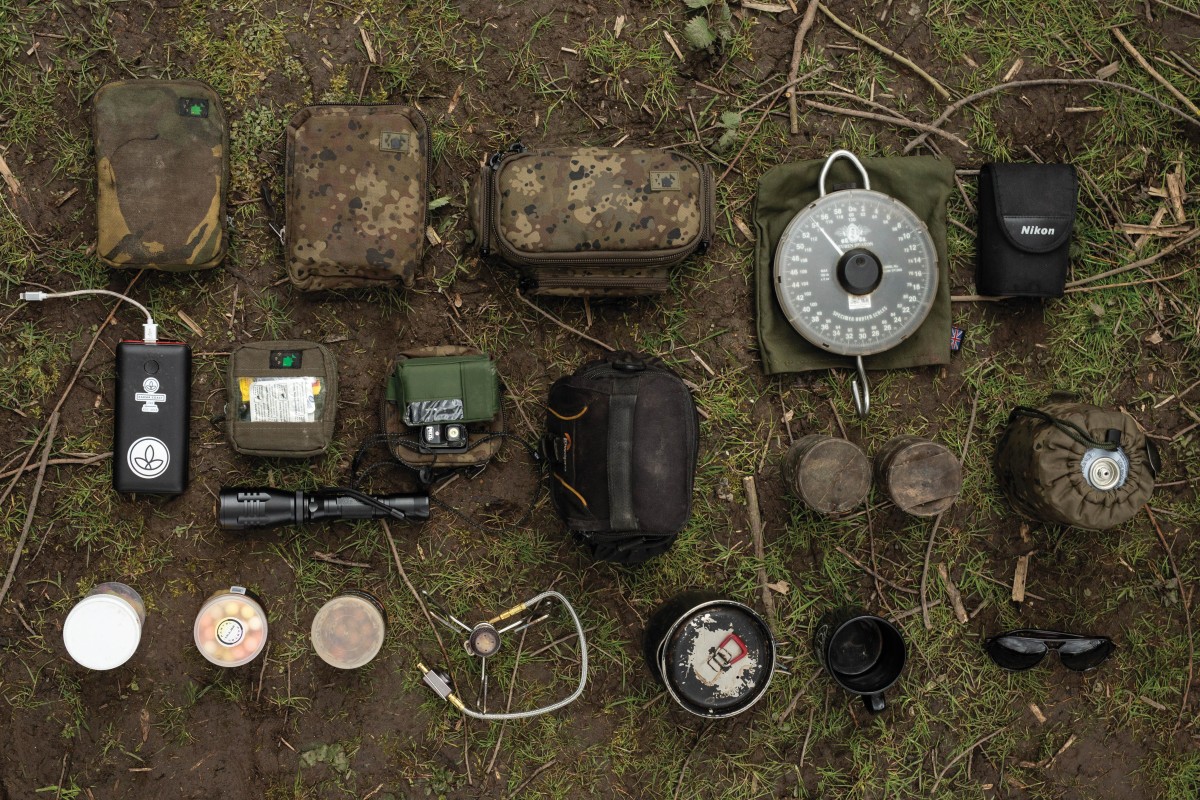
Tools Of My Trade
Do you take far more than you’ll ever need to the bank with you? Oz Holness has some advice on how to prepare for a session, as he explains what he takes with him, and how he transports it.
There is nothing more satisfying than having a good sort through your kit every now and then. It gives me a great sense of well-being to freshen everything up and get organised for any new ventures I have planned… and being ‘best prepared’ is always staying a step ahead of the game in terms of organisation and efficiency. Surely we would all like to be more focused on the lake and carp location, rather than that mountain of kit we are carrying about ‘just in case’.
Different set of circumstances
I have always taken great pride in keeping as organised and minimal on the bank as possible… it generally suits my style of angling and keeps me alert to my surroundings and those signs I want and need to be in-tune with. Of course, as with everything, there are trade-offs and considerations to be made. What works for me may not be suitable for everyone, or every venue for that matter, and so we have to remain open-minded, and most importantly, adaptable. There are no rules in carp fishing, and we all do things in our own way to suit our situation.
Each venue we fish has a different set of circumstances to deal with, and a tackle ‘payload’ for us to think about. For example, big, remote overgrown pits require a different approach to let’s say a small day-ticket water with easy access via a lovely gravel track round the perimeter and maybe the potential for plenty of bites! The two scenarios could require different volumes of tackle and bait. Most of my angling these days, is generally done on the less busy, lower stock type of venues, where I am looking at the chances of a handful of bites a month at the right times of year, and every chance of moving around the venue into different swims during the course of my trip, and so my kit and style is generally tailored around this sort of scenario.
I actually base my whole angling style around fishing 24hr periods. This was developed from my early days in the fire service when I would fish two separate overnight trips during the week, and never did any real ‘session angling’ to speak of. Of course, when I began fishing further afield 48 and 72hr trips became necessary due to added fuel costs and time spent travelling. I always kept that same mindset of the 24hr or overnight style of angling, though, as I feel it is the most efficient and effective one for me, and the places I fish.
The base of my kit
So, it’s all based around pre-planning, getting a quick idea of the particular venue and the main approach or style which will dictate the finer details of the pack, but the root of everything I take pretty much stays the same. I base my kit around the TA Compact Rucksack and will fine-tune the contents to my specific needs and venue, as I will explain…
I like to keep all my kit in one place as much as possible when on the bank, and this frees me up from having a swim-full of different bags and clutter that all need packing up and sorting out in the event of a quick move, one that could possibly be in the middle of the night! The rucksack is, of course, compact as the name suggests, but it swallows up the bulk of what I need—like a Tardis almost!
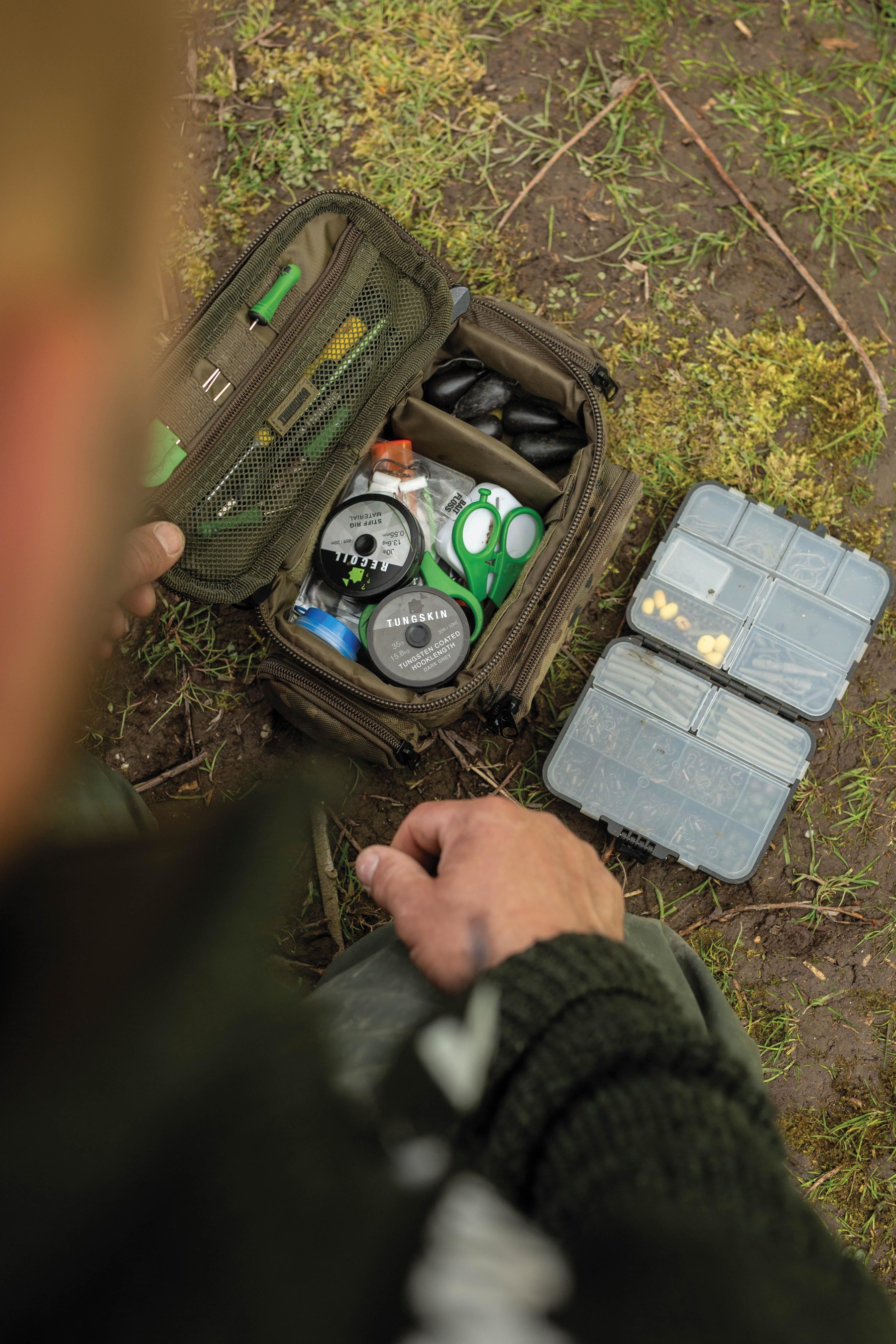
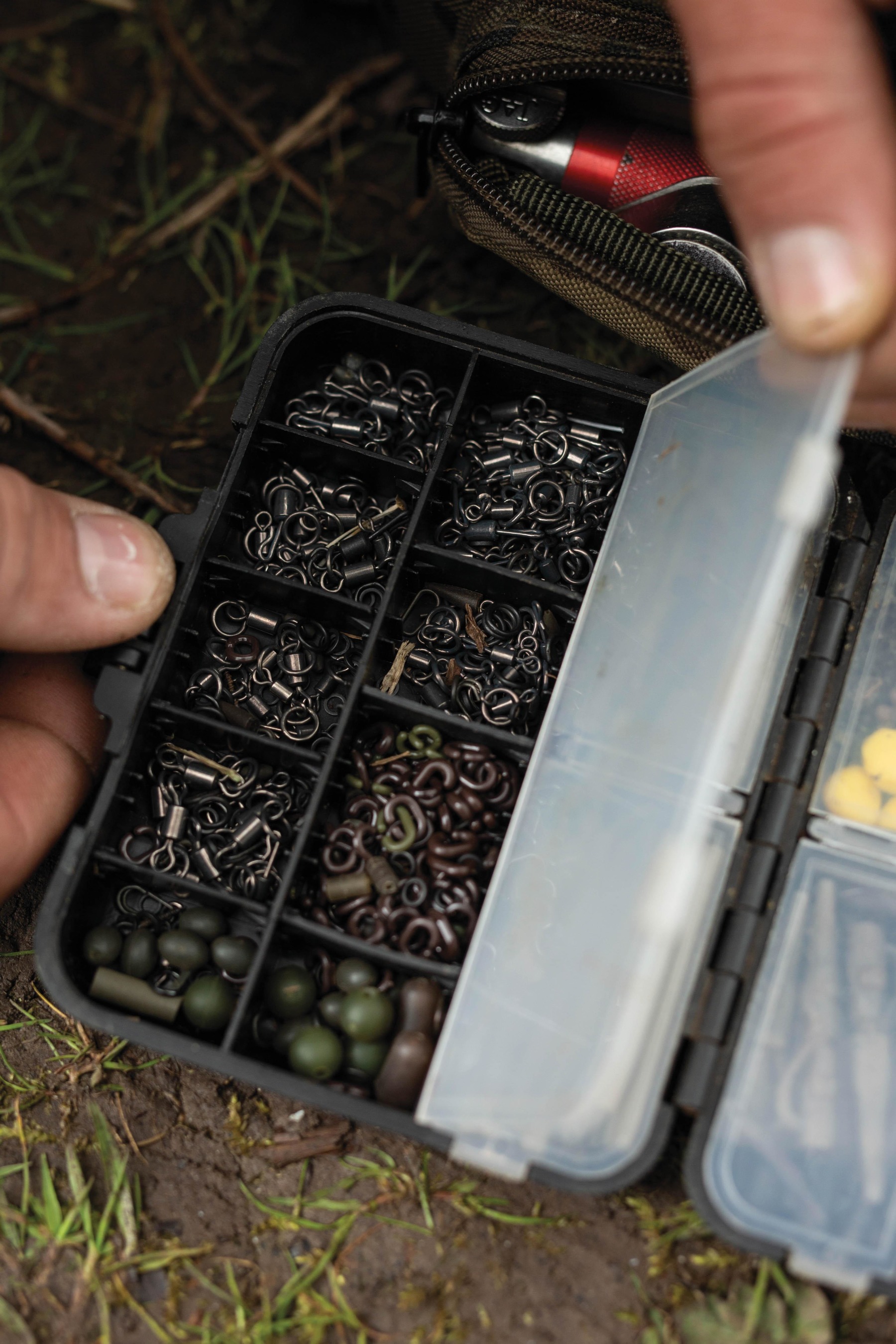
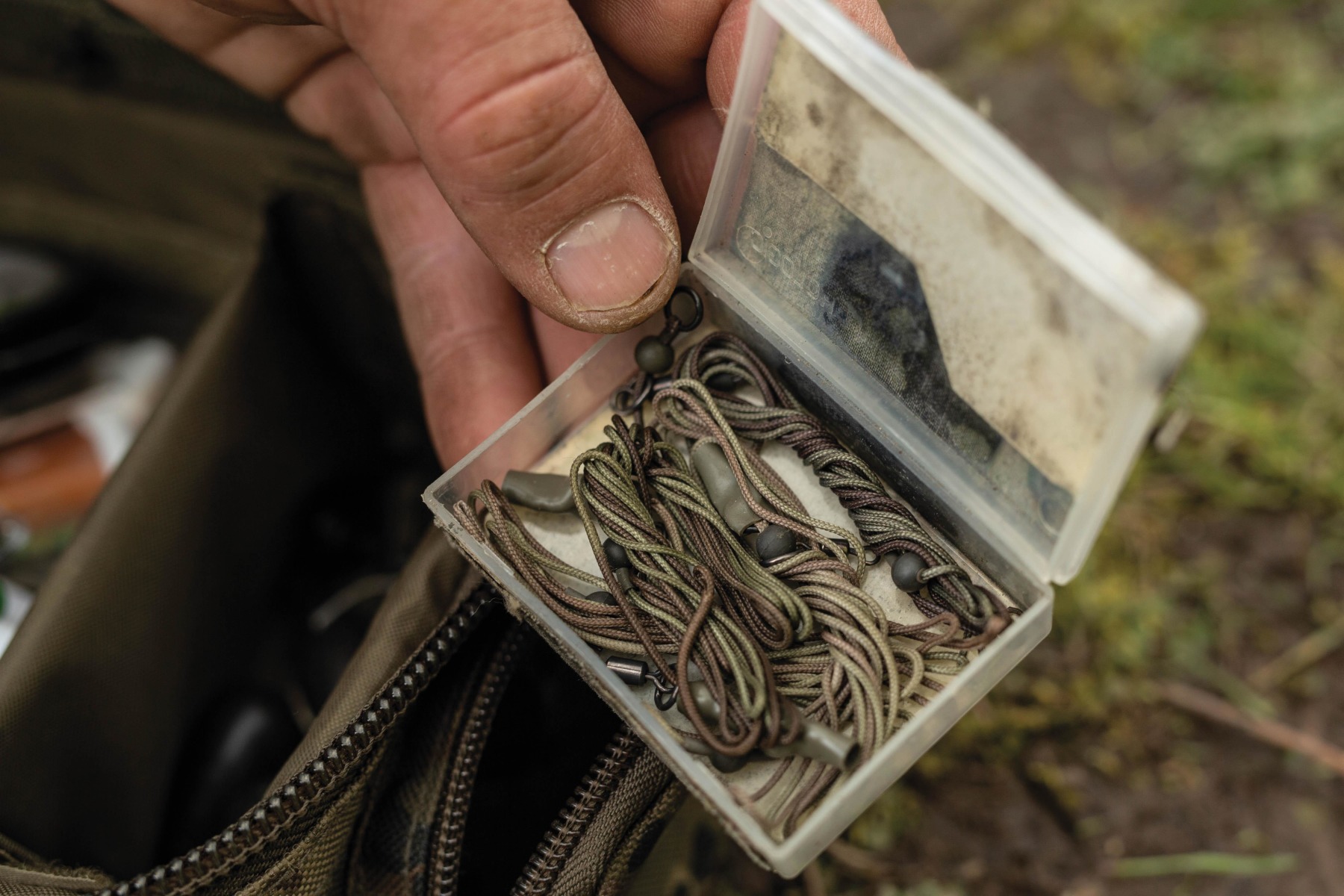
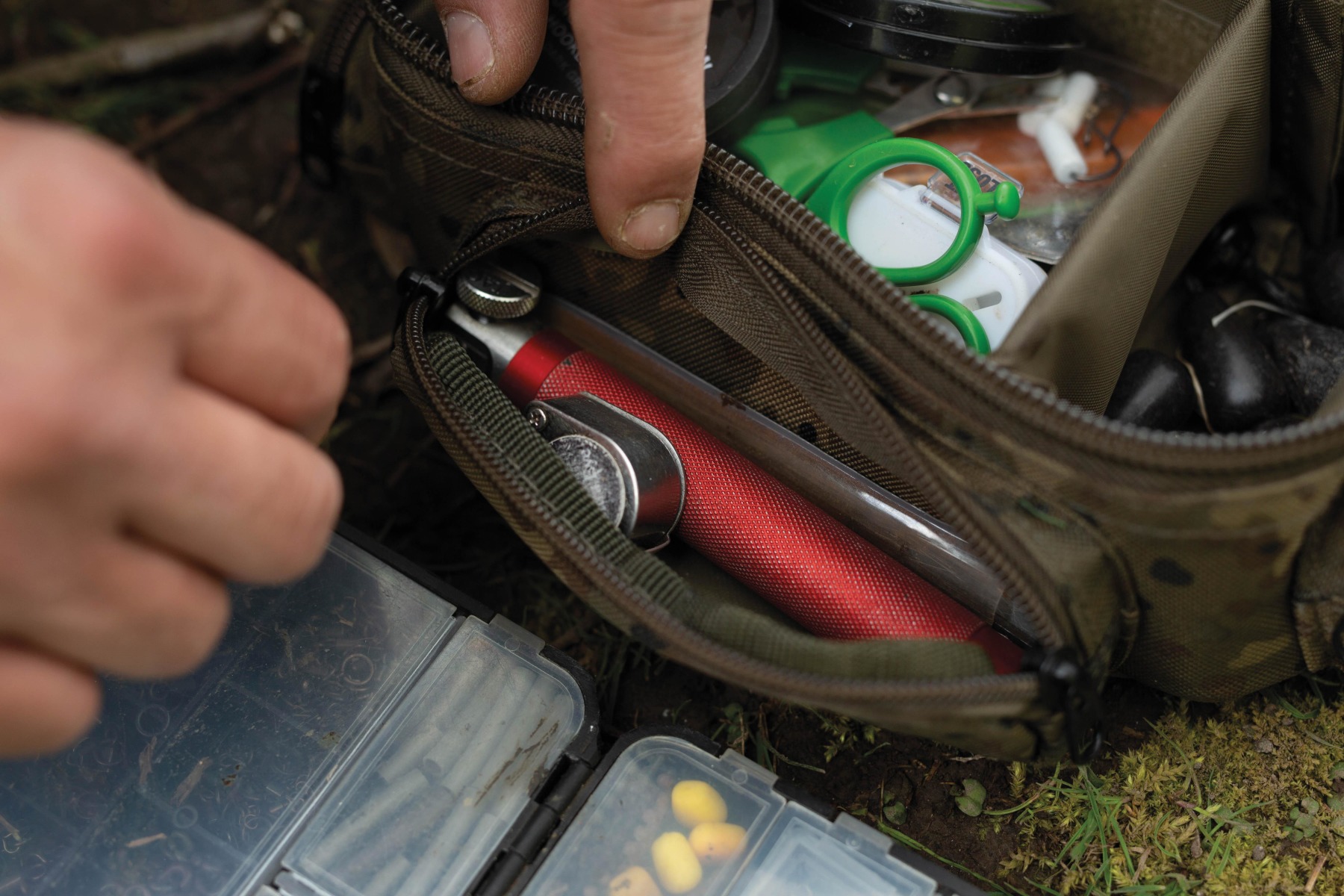
At a quick glance, the contents generally consist of my DLSR camera and prime lens self-take kit; scales; tea kit with a kettle (into which fits a small folding stove); compact binoculars; a pouch containing overnight essentials such as toothpaste, mouthwash (the travel size) toilet paper, headache pills, etc.; a compact tackle pouch with all terminal accessories and a selection of chosen leads I may need; plus a couple of tubs of mixed hookbaits. I use carefully chosen items such as a titanium kettle, cup, spork and a reliable stove from the mountaineering industry, for example, as they are incredibly robust and light in weight; a Petzle rechargeable headlamp, receiver and a compact power pack. My buzzers are either on bars in the top pouch of the rucksack, or on single sticks in the side loops. So everything I need to get fishing is available and to hand straight away, without me having to empty the contents of several bags or turn the barrow inside out!
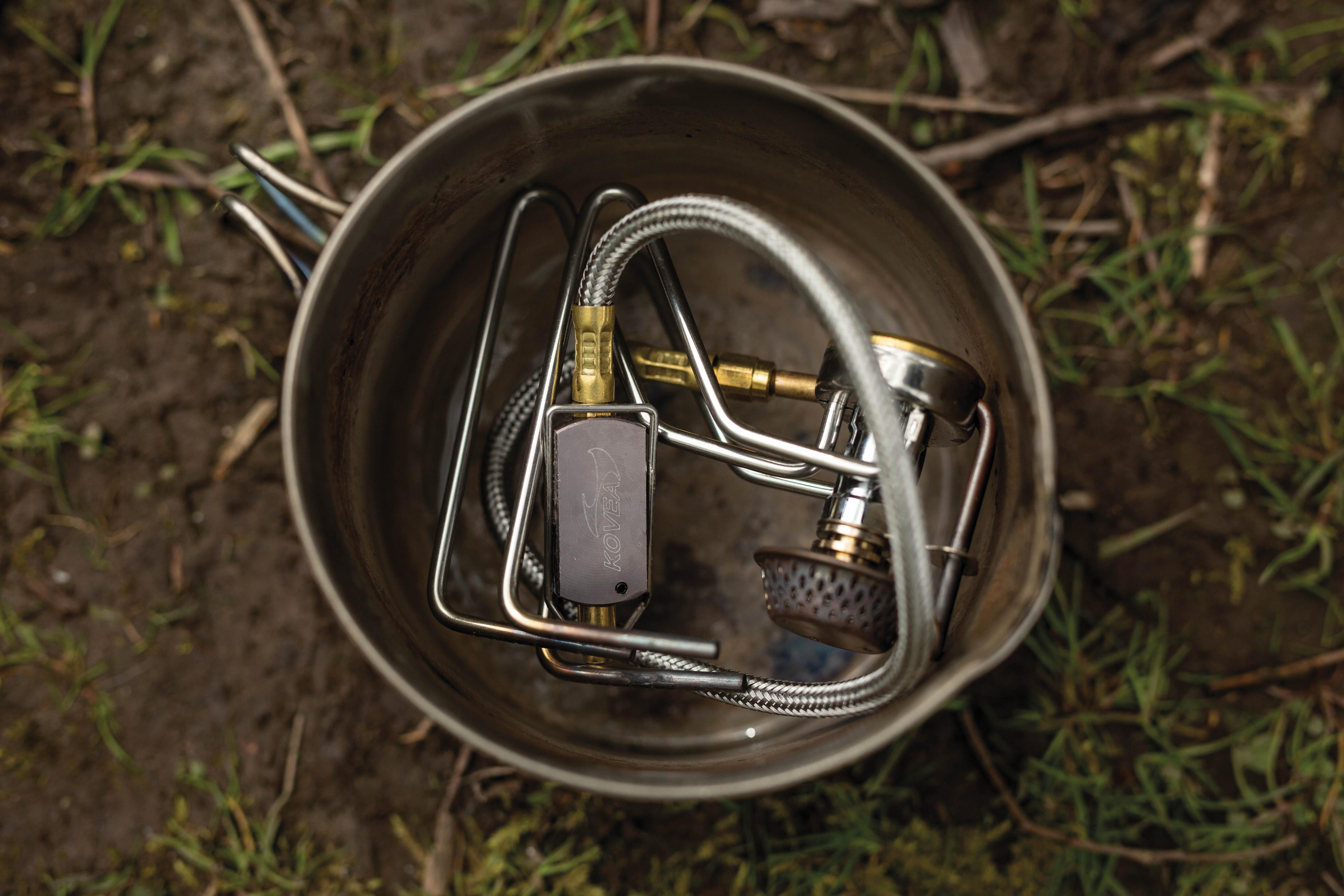
Fresh bait
My fresh boiled bait and particle is stored in a variety of large buckets and also kept in the van. I then decant what I require into a much smaller bucket which sits on my barrow handle. This will contain enough bait to fish with for 24hrs in most situations I’m faced with. Of course, I would take bigger buckets to the lake if I was fishing more heavily stocked venues and expecting blistering action where you could possibly get through a lot of bait very quickly! For my type of fishing, it’s there if I need it, but it’s pointless carrying it all round the lake with me just for the sake of it. I have also cut down the handle of an old catapult so it fits perfectly in my small bucket, and this is great for little baiting missions around the lake.
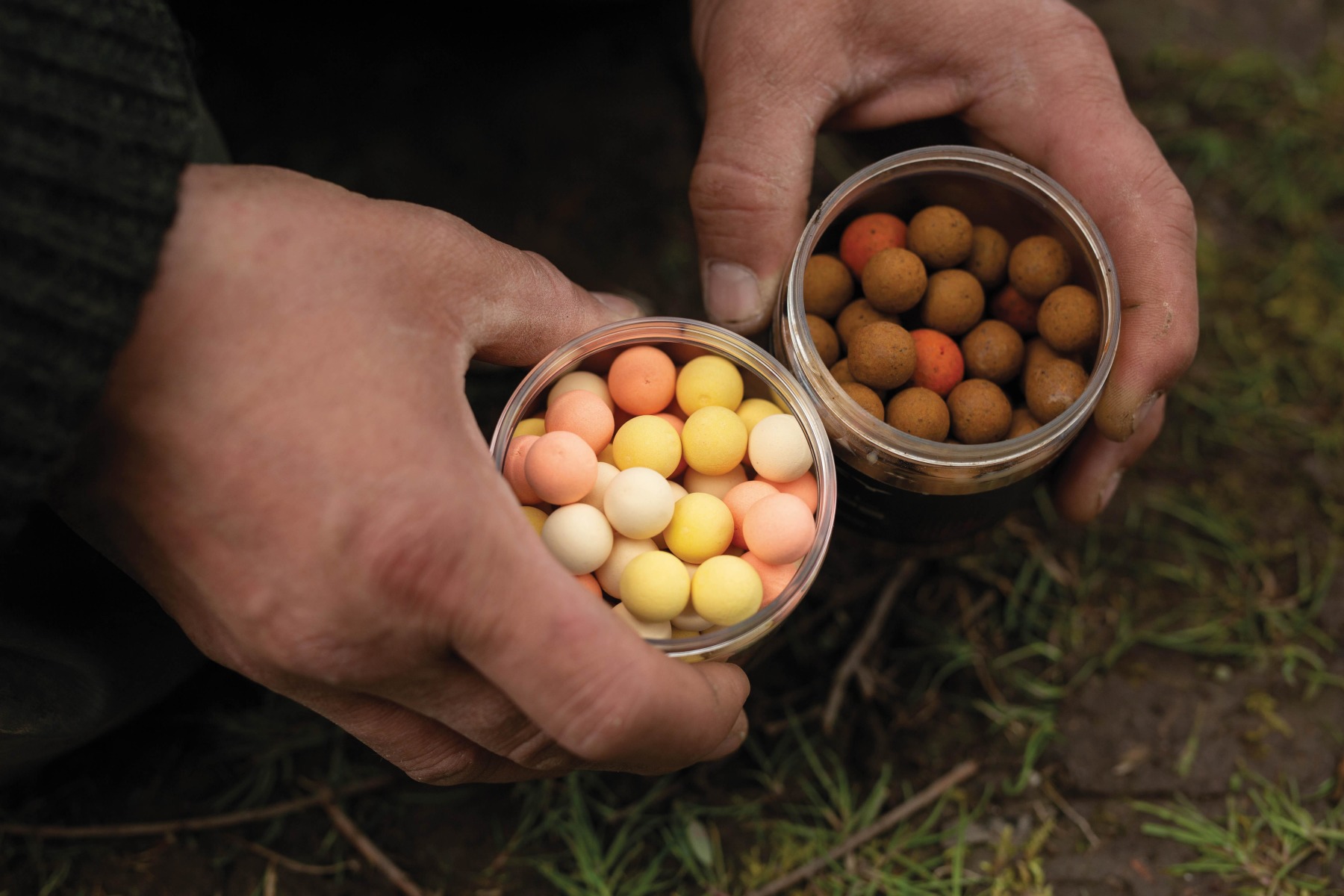
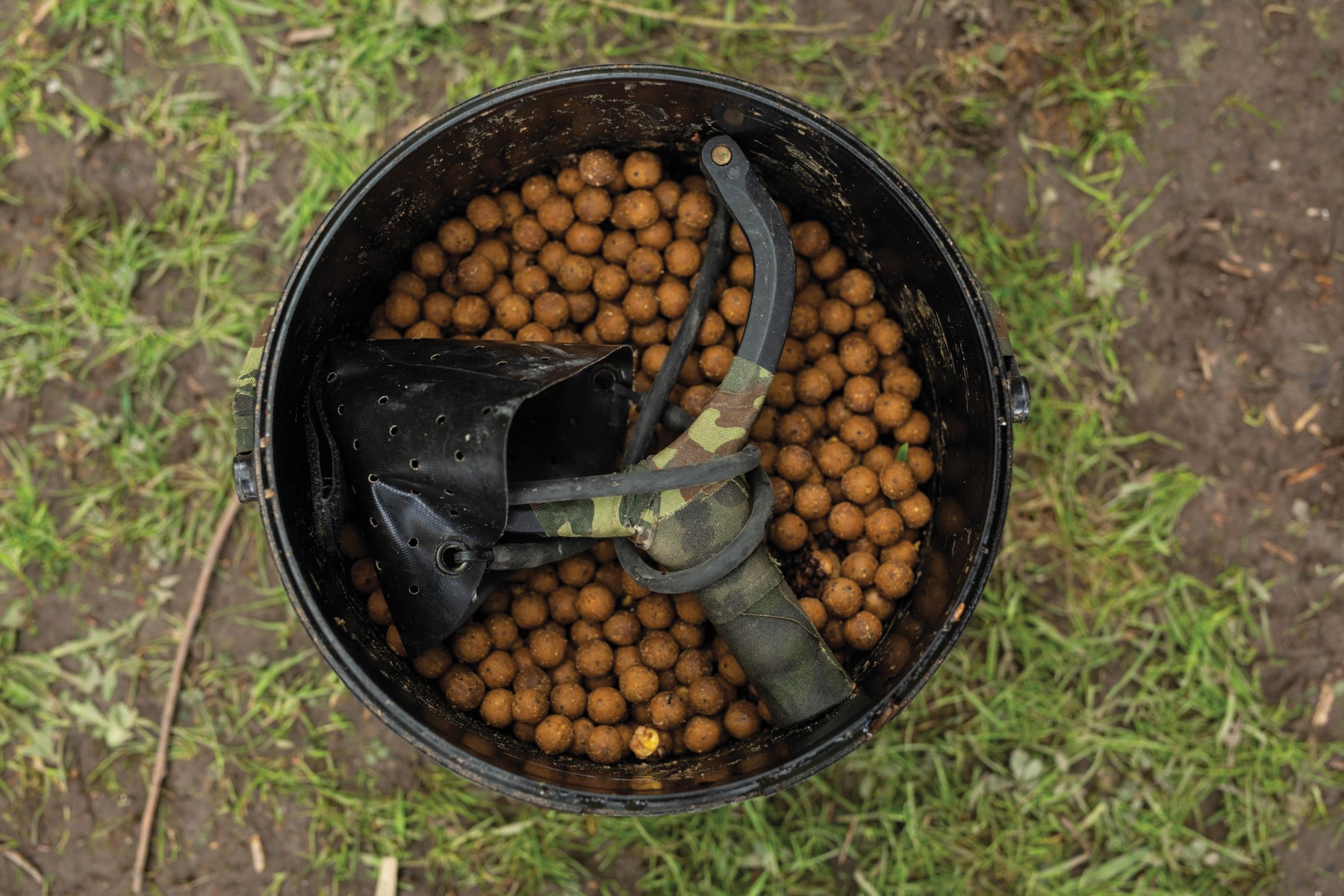
Rods, sticks and brolly
I usually carry three fishing rods plus a Spomb/leading rod in my quiver, alongside two nets, a carbon throwing stick and some wrap sticks. My brolly then straps to the back of the quiver so everything is kept together, and I carry six pegs in the webbing loops of the rucksack. The barrow is then free for a bedchair and mat on the mainframe, and water, waders, tripod, etc. will sit in the under-barrow bag.
Left in the van
A spares pouch is kept in the van. This contains a variety of leads, along with a small box of batteries, catty elastic, Spomb, marker float and a few tins of gas. Floaters are in a bucket, and I have a pouch containing floater and Zig terminal kit for those opportunities as they present themselves. I also keep a small variety of mixed pellet and some tins of corn etc., as these can stay in the van for extended periods of time until they’re needed.
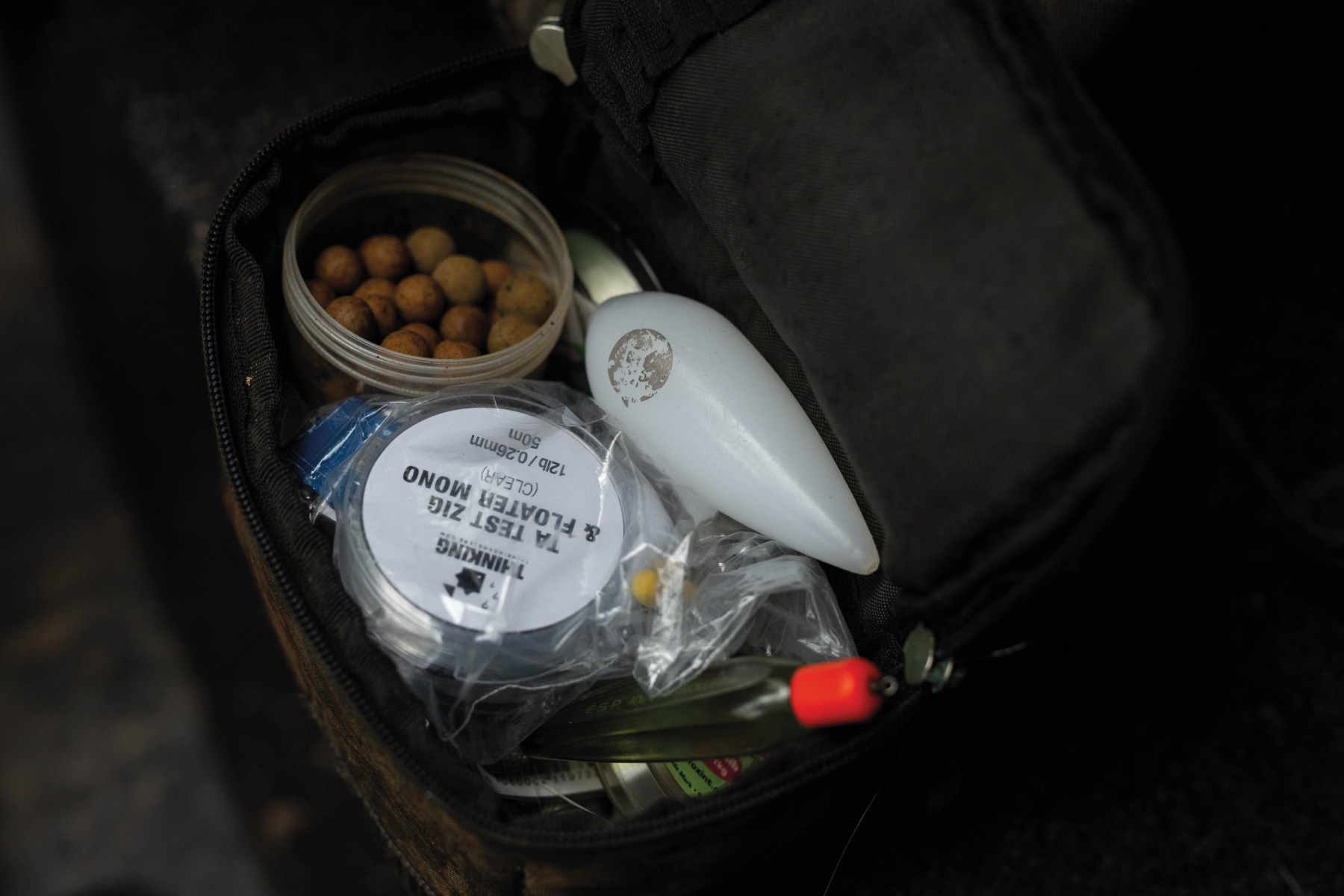
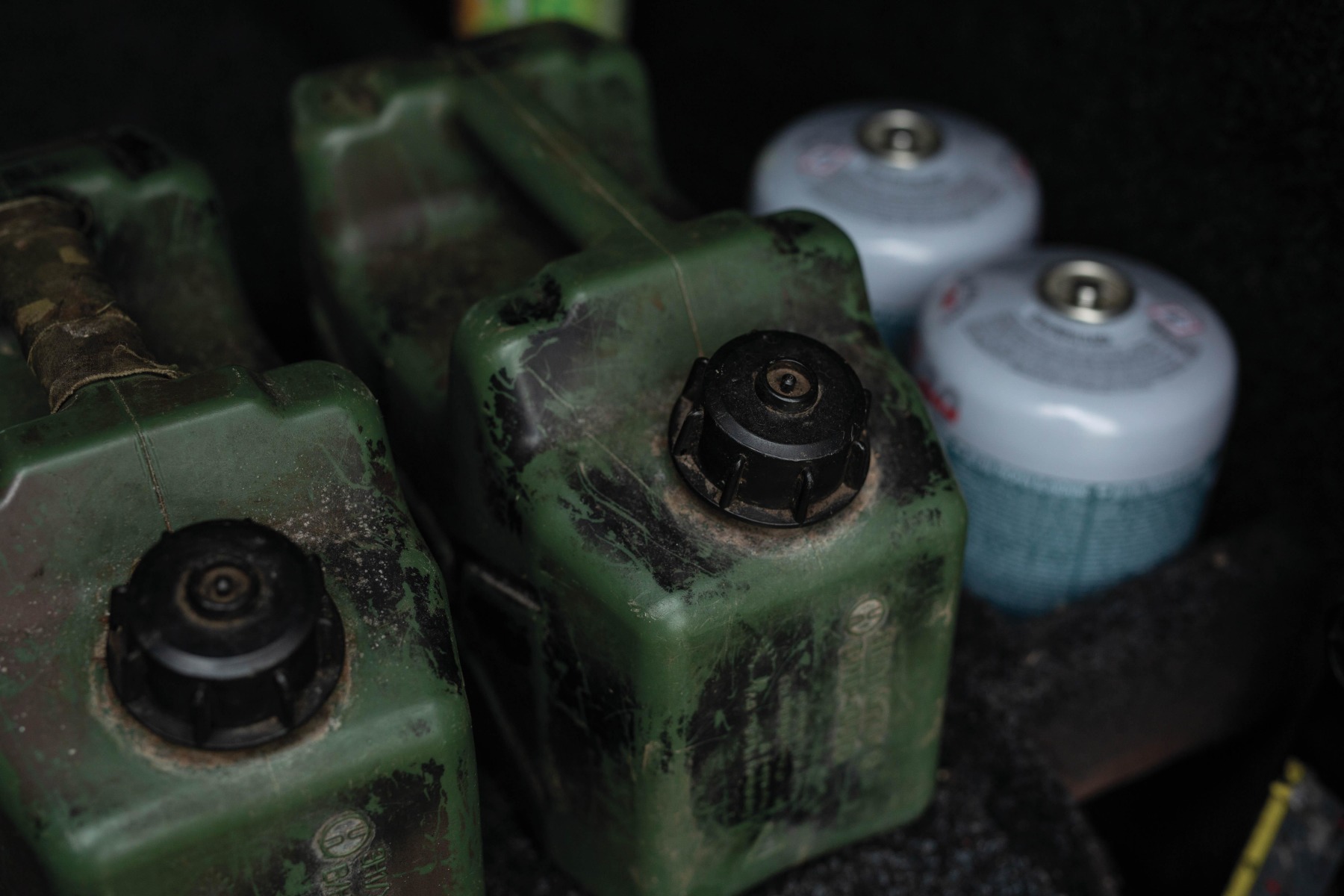
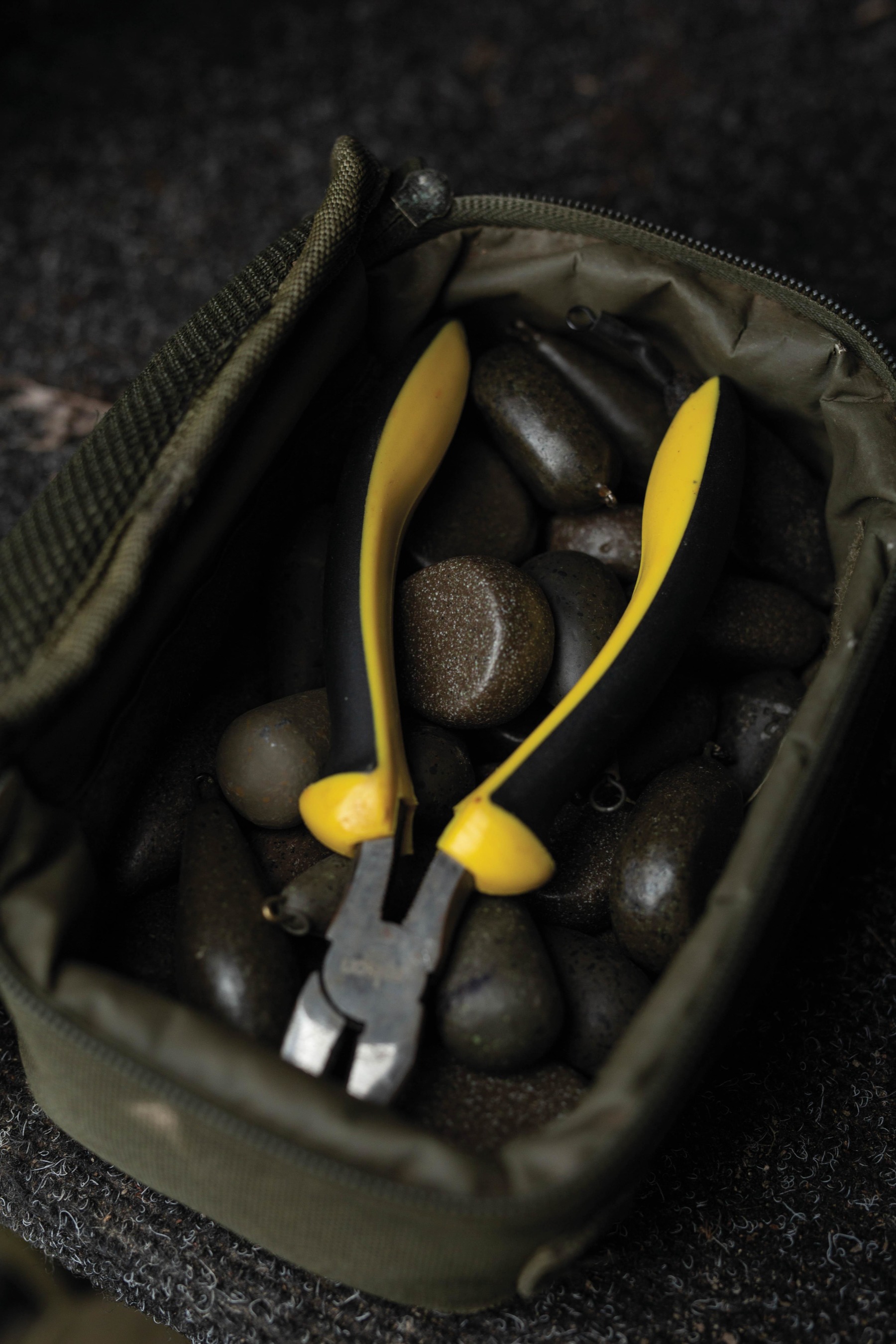
My food bags
Food-wise, I have a simple system. I carry three five-litre water cans in the van and take one of these for every 24hrs or so, which usually does me amply, unless I get a few tea-punishers visiting! I use two TA Cool Bags, and these are kept in the van during my trips, with cool blocks inside. At the start of each month, I make up meals at home and freeze them in Tupperware containers. These will be various simple things to heat up on the bank in my single pan like curry, bolognaise, chilli, casserole, stew, etc. I use the easy Tilda rice or just boil some pasta before heating my meal. One cool bag will contain these items, and the other will be for milk, biscuits, fruit snacks, etc. I take a couple of sachets of porridge and some nuts or fruit for my breakfast, and a few snack and protein bars, which I store in the zipped pouch at the top of the rucksack.
I will usually try to prepare my main meal and do any cooking back at the van around early afternoon, when I will also have a walk around the venue and stop off to resupply with anything I need, such as fresh water, spare leads, bait, etc. I cook my food and then have a clean-up before heading back to my chosen swim, and all the rubbish is left in the van, rather than around your swim attracting vermin etc. I can then spend the rest of the afternoon and evening looking for fish, or chilling out back at the swim with a beer!
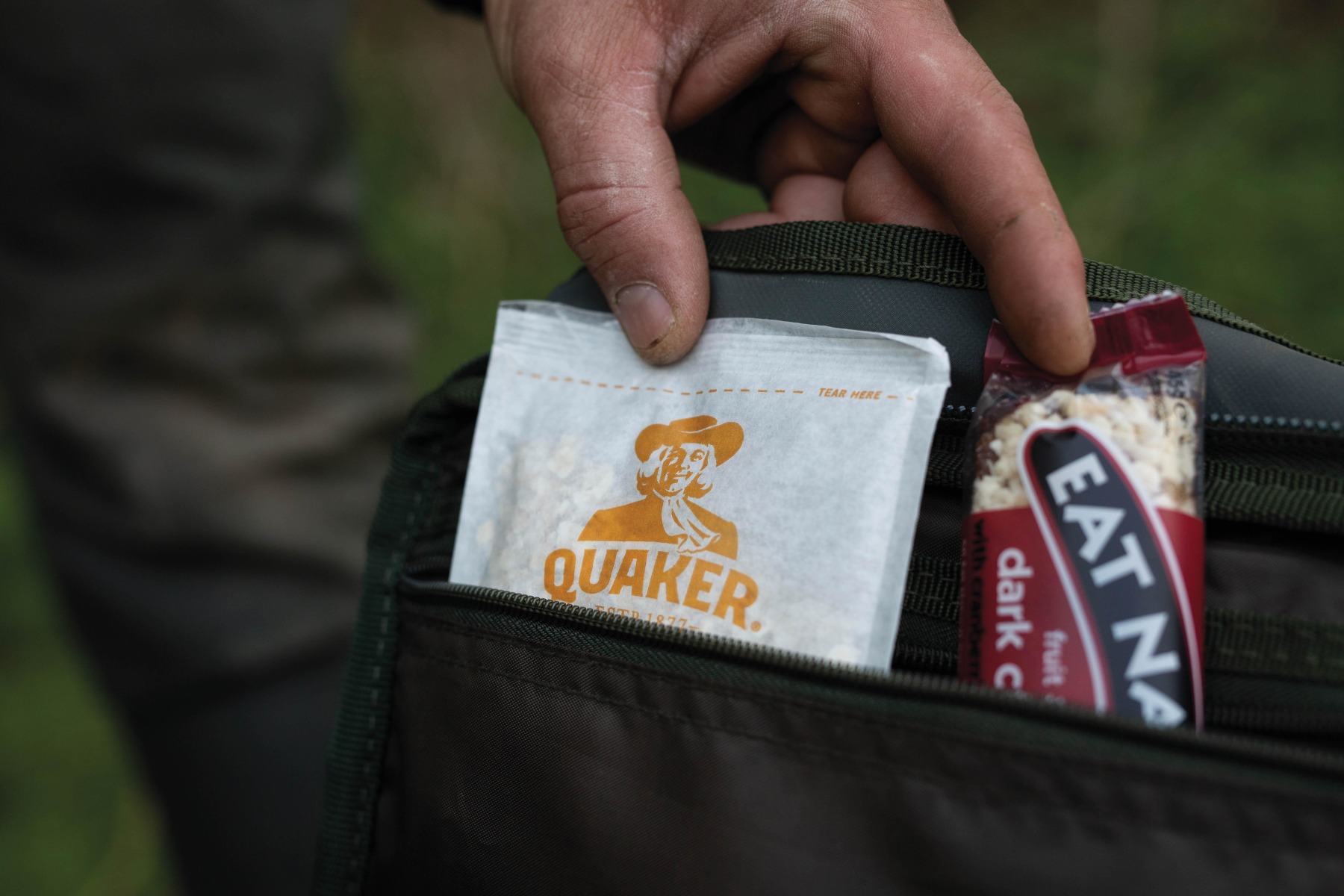
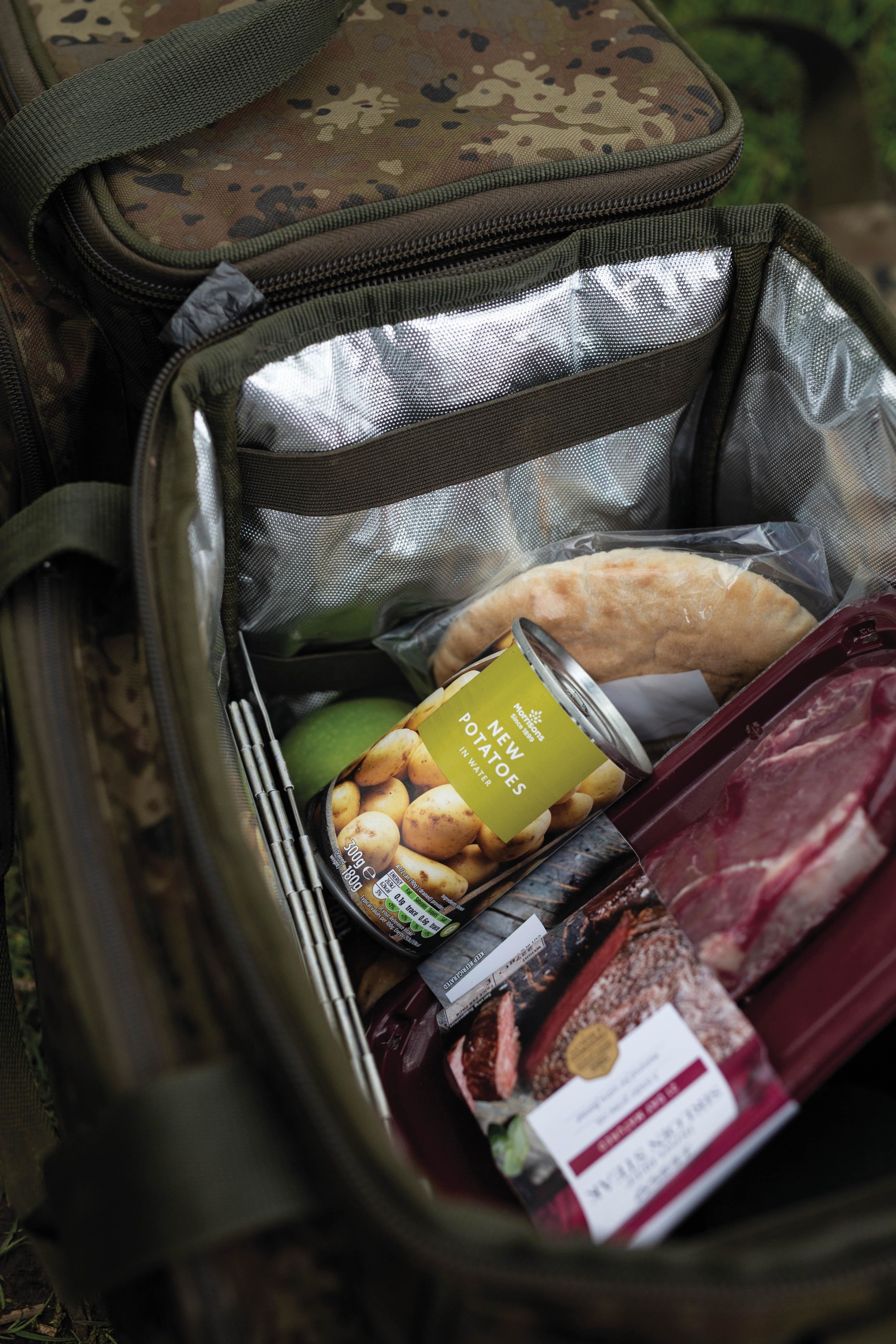
Of course, if I am fishing for a few days and have plotted up on baited areas etc., I still love to take the old barbecue gear and have some lovely grilled meats and a few ales! It just very much depends on the venue and the situation; as I said earlier, it’s all about being adaptable and enjoying yourself too, of course!
So, it’s all pretty straightforward and common sense really. Free yourself up from a lot of the clutter you don’t regularly use, organise and streamline your kit to your venue of choice, and then it’s a simple case of fine-tuning as you move forward and the seasons change. For instance, swap the spring and summer brolly for a full bivvy in the autumn and winter etc.



